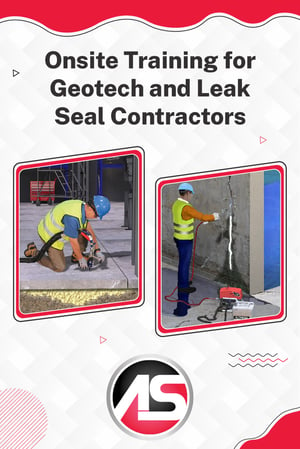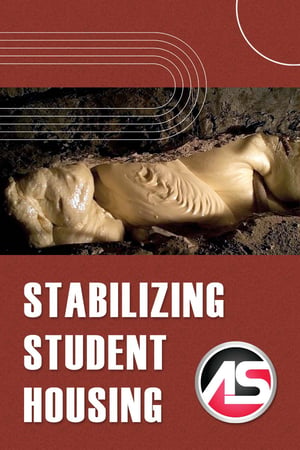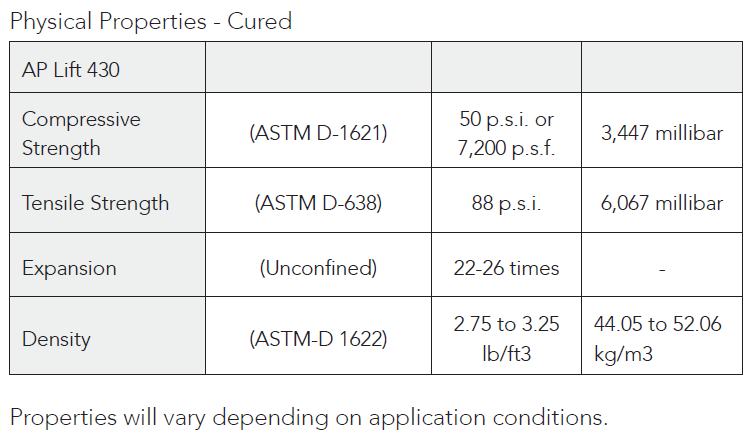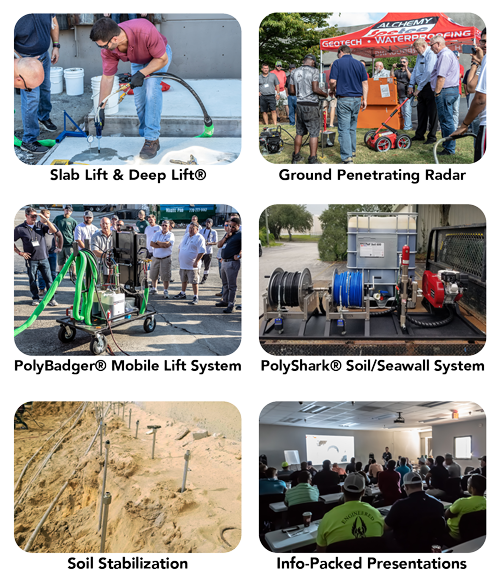
Alchemy-Spetec HQ in Tucker, GA
 May 2nd - May 4th
May 2nd - May 4th
$745 Registration Fee
$665 for each additional participant from
the same company.
Get ready for a thorough education in Slab Lifting, Soil Stabilization, the Deep Lock® process, Crack Injection, and Curtain Grouting. You’ll get hands-on training from a technical staff with decades of on-the-job experience.
Agenda Items
- Geotech Product Line Overview
- Geotech Applications & Case Studies
- MixMaster Pro Slab Lifting Gun
- Slab Lift Rig Demonstration
- Pump Demos & Training
- PolyShark® / Soil Stabilization
- Deep Lock®
- Ground Penetrating Radar
- PolyBadger® Mobile Slab Lifting System
- Crack Injection
- Curtain Grouting
- Estimating Material for Jobs
Topics:
Equipment & Accessories,
All Posts,
Lift Slabs,
Stabilize Soil,
Business Tips,
Fill Voids,
Deep Lock

Alchemy-Spetec HQ in Tucker, GA
 May 2nd - May 4th
May 2nd - May 4th
$745 Registration Fee
$665 for each additional participant from
the same company.
Get ready for a thorough education in Slab Lifting, Soil Stabilization, the Deep Lock® process, Crack Injection, and Curtain Grouting. You’ll get hands-on training from a technical staff with decades of on-the-job experience.
Agenda Items
- Geotech Product Line Overview
- Geotech Applications & Case Studies
- MixMaster Pro Slab Lifting Gun
- Slab Lift Rig Demonstration
- Pump Demos & Training
- PolyShark® / Soil Stabilization
- Deep Lock®
- Ground Penetrating Radar
- PolyBadger® Mobile Slab Lifting System
- Crack Injection
- Curtain Grouting
- Estimating Material for Jobs
Topics:
Equipment & Accessories,
All Posts,
Lift Slabs,
Stabilize Soil,
Business Tips,
Fill Voids,
Deep Lock

Alchemy-Spetec HQ in Tucker, GA

May 2nd - May 4th
$745 Registration Fee
$665 for each additional participant from
the same company.
Get ready for a thorough education in Slab Lifting, Soil Stabilization, the Deep Lock® process, Crack Injection, and Curtain Grouting. You’ll get hands-on training from a technical staff with decades of on-the-job experience.
Agenda Items
- Geotech Product Line Overview
- Geotech Applications & Case Studies
- MixMaster Pro Slab Lifting Gun
- Slab Lift Rig Demonstration
- Pump Demos & Training
- PolyShark® / Soil Stabilization
- Deep Lock®
- Ground Penetrating Radar
- PolyBadger® Mobile Slab Lifting System
- Crack Injection
- Curtain Grouting
- Estimating Material for Jobs
Topics:
Equipment & Accessories,
All Posts,
Lift Slabs,
Stabilize Soil,
Business Tips,
Fill Voids,
Deep Lock

 Premier On-The-Job Technical Support
Premier On-The-Job Technical Support
Alchemy-Spetec offers onsite training for qualified geotech and leak seal customers. Starting up a contracting business, tackling a larger job than you're used to, getting new personnel trained, or adding a new service to your arsenal can be daunting. Our industry-leading technical support team specializes in training contractors on the job site.
Always Be Prepared for Lucrative Jobs
With the backing of Alchemy-Spetec's technical support team, you'll never have to worry about your crew's ability to take on the next opportunity - whether it be a first-time geotech or leak seal job, or a bigger job than they are used to. Qualified customers can schedule an onsite visit from an Alchemy-Spetec specialist in order to ensure that the process goes as planned.
Estimation and Job Planning Assistance
Speaking of planning, your technical support specialist can also work with you in the estimation and preparation stages of your project as well.
Call 404-618-0438 for more information on Alchemy-Spetec technical support.
Want more information on Alchemy-Spetec products?


Topics:
All Posts,
Lift Slabs,
Seal Leaks,
Stabilize Soil,
Business Tips,
Fill Voids,
Deep Lock

 Geotech specialists from Ground Consolidation Services were called into a job by a general contractor in Atlanta. A property owner was restoring a very interesting pool house in an upscale neighborhood. The pool actually sits atop and in the center of the pool house itself. During the initial restoration process, they discovered voids under the pool house foundation.
Geotech specialists from Ground Consolidation Services were called into a job by a general contractor in Atlanta. A property owner was restoring a very interesting pool house in an upscale neighborhood. The pool actually sits atop and in the center of the pool house itself. During the initial restoration process, they discovered voids under the pool house foundation.
Powerful Polymer
The GCS crew recommended Alchemy-Spetec's AP Lift 475, a two-component, hydrophobic, structural lifting polymer designed for airport, highway, and railroad applications. It can be used to stabilize structures, fill voids, and lift slabs supporting tremendous loads. The real beauty of this material is its ability to be traffic ready in less than one hour.

Painless Procedure
The technicians used the compact PolyBadger pump system for this job since the location was not easily accessible with a slab lifting rig. The PolyBadger, manufactured by Alchemy-Spetec, is a tough and compact mobile cart system for pumping polyurethane resin. Using this pump, the crew was able to fill the voids at a relatively quick pace.
Rapid Result
The GCS technicians were out of the way and the restoration crew was able to start backfilling the area in a few short hours.
Topics:
All Posts,
Fill Voids

 Recently Atlanta-based contractor Sitemix was called in for a highly urgent remedial project at a nearby university apartment building. A plumbing break quickly evolved into a bigger issue than just fixing some pipes. The breach resulted in large voids under the foundation slab that compromised the integrity of the entire structure. Sitemix answered the call and was immediately up to the challenge.
Recently Atlanta-based contractor Sitemix was called in for a highly urgent remedial project at a nearby university apartment building. A plumbing break quickly evolved into a bigger issue than just fixing some pipes. The breach resulted in large voids under the foundation slab that compromised the integrity of the entire structure. Sitemix answered the call and was immediately up to the challenge.
Powerful Polymer
Alchemy-Spetec’s AP Lift 430 was chosen for the job due to its high density, high expansion rate, high yield, and cure strength. This two-component, high-strength, high-density, hydro-insensitive structural polyurethane foam is ideal for void fill and structural stabilization and void fill in situations like the one described above. AP Lift 430 weighs 2.75 – 3.25 pounds per cubic foot.

Painless Procedure
The structural polymer was injected through the slab to fill the voids and compact any compromised soil.
Rapid Result
The project was completed in a half day while most of the occupants were in class. The GC was ecstatic to have this emergency resolved quickly and painlessly.
Want more information on geotech products?

Topics:
All Posts,
Stabilize Soil,
Fill Voids

Alchemy-Spetec HQ in Tucker, GA
THIS EVENT HAS BEEN CANCELLED

 $745 Registration Fee
$745 Registration Fee
$665 for each additional participant from
the same company.
Get ready for a thorough education in Slab Lifting, Soil Stabilization, the Alchemy-Spetec Deep Lift® process, equipment, and applications. You’ll get hands-on training from a technical staff with decades of on-the-job experience.
Tuesday, October 4th
- Geotech Product Line Overview
- Geotech Applications & Case Studies
- MixMaster Pro Slab Lifting Gun
- Slab Lift Rig Demonstration
Wednesday, October 5th
- Pump Demos & Training
- PolyShark® / Soil Stabilization
- Deep Lift®
- Ground Penetrating Radar
Thursday, March 31st
- PolyBadger® Mobile Slab Lifting System
- Estimating Material for Jobs
THIS EVENT HAS BEEN CANCELLED

Topics:
Equipment & Accessories,
All Posts,
Lift Slabs,
Stabilize Soil,
Business Tips,
Deep Lift,
Fill Voids

Alchemy-Spetec HQ in Tucker, GA
THIS EVENT HAS BEEN CANCELLED

 $745 Registration Fee
$745 Registration Fee
$665 for each additional participant from
the same company.
Get ready for a thorough education in Slab Lifting, Soil Stabilization, the Alchemy-Spetec Deep Lift® process, equipment, and applications. You’ll get hands-on training from a technical staff with decades of on-the-job experience.
Tuesday, October 4th
- Geotech Product Line Overview
- Geotech Applications & Case Studies
- MixMaster Pro Slab Lifting Gun
- Slab Lift Rig Demonstration
Wednesday, October 5th
- Pump Demos & Training
- PolyShark® / Soil Stabilization
- Deep Lift®
- Ground Penetrating Radar
Thursday, March 31st
- PolyBadger® Mobile Slab Lifting System
- Estimating Material for Jobs
THIS EVENT HAS BEEN CANCELLED

Topics:
Equipment & Accessories,
All Posts,
Lift Slabs,
Stabilize Soil,
Business Tips,
Deep Lift,
Fill Voids

Alchemy-Spetec HQ in Tucker, GA
THIS EVENT HAS BEEN CANCELLED

 $745 Registration Fee
$745 Registration Fee
$665 for each additional participant from
the same company.
Get ready for a thorough education in Slab Lifting, Soil Stabilization, the Alchemy-Spetec Deep Lift® process, equipment, and applications. You’ll get hands-on training from a technical staff with decades of on-the-job experience.
Tuesday, October 4th
- Geotech Product Line Overview
- Geotech Applications & Case Studies
- MixMaster Pro Slab Lifting Gun
- Slab Lift Rig Demonstration
Wednesday, October 5th
- Pump Demos & Training
- PolyShark® / Soil Stabilization
- Deep Lift®
- Ground Penetrating Radar
Thursday, March 31st
- PolyBadger® Mobile Slab Lifting System
- Estimating Material for Jobs
THIS EVENT HAS BEEN CANCELLED

Topics:
Equipment & Accessories,
All Posts,
Lift Slabs,
Stabilize Soil,
Business Tips,
Deep Lift,
Fill Voids

Alchemy-Spetec HQ in Tucker, GA
THIS EVENT HAS BEEN CANCELLED

 $745 Registration Fee
$745 Registration Fee
$665 for each additional participant from
the same company.
Get ready for a thorough education in Slab Lifting, Soil Stabilization, the Alchemy-Spetec Deep Lift® process, equipment, and applications. You’ll get hands-on training from a technical staff with decades of on-the-job experience.
Tuesday, October 4th
- Geotech Product Line Overview
- Geotech Applications & Case Studies
- MixMaster Pro Slab Lifting Gun
- Slab Lift Rig Demonstration
Wednesday, October 5th
- Pump Demos & Training
- PolyShark® / Soil Stabilization
- Deep Lift®
- Ground Penetrating Radar
Thursday, March 31st
- PolyBadger® Mobile Slab Lifting System
- Estimating Material for Jobs
THIS EVENT HAS BEEN CANCELLED

Topics:
Equipment & Accessories,
All Posts,
Lift Slabs,
Stabilize Soil,
Business Tips,
Deep Lift,
Fill Voids
 May 2nd - May 4th
May 2nd - May 4th




 Premier On-The-Job Technical Support
Premier On-The-Job Technical Support


 Geotech specialists from
Geotech specialists from 

 Recently Atlanta-based contractor
Recently Atlanta-based contractor 






